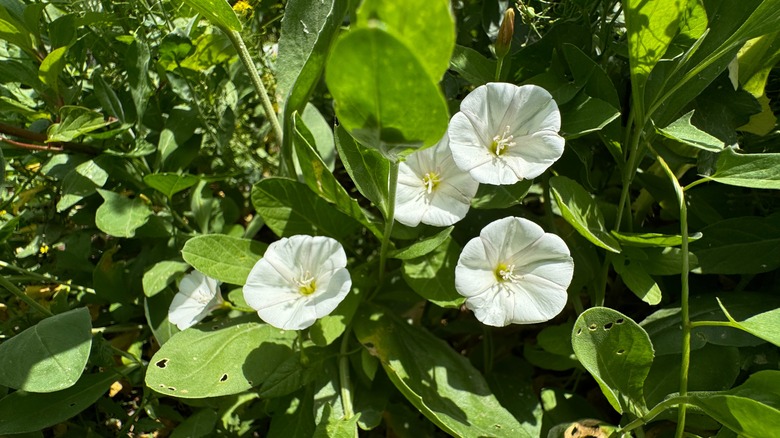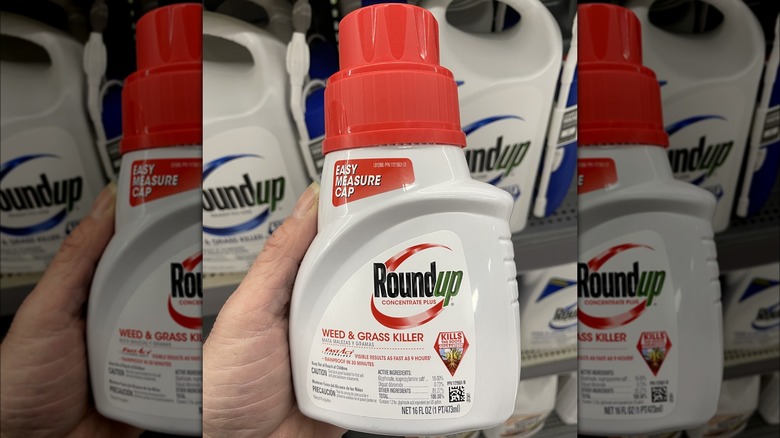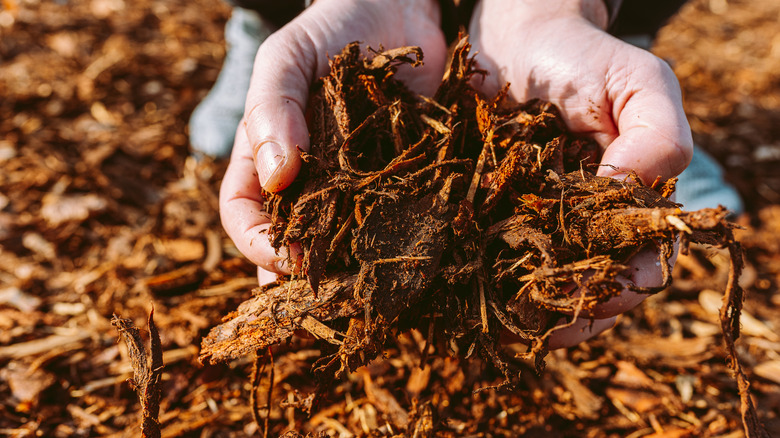This Is The Best Time Of Year To Get Rid Of Bindweed & Prevent It From Growing
Occasionally, agronomy and home gardening bleed into each other, birthing a cohesive space, not of food crops, but of weeds — bindweeds, in particular. Persisting in crop fields through the years, field bindweed (Convolvulus arvensis) has since escaped and developed a penchant for home gardens, promising to never leave. You only need to see the way it lodges its roots 20 feet deep in a single season to gather the solemnity of its commitments. Sometimes, you may also encounter field bindweed's relatively milder cousin, hedge bindweed (Calystegia sepium, previously Convolvulus sepium), in your yard — differentiated via the bigger, white trumpet blooms and leaves if the weed has progressed to the flowering stage. But make no mistake, you want both the bindweeds out of your garden, well before they flower or, worse, produce seeds.
In actuality, if you manage to identify the white flowering weeds in the early (seedling) stages, you're better off pulling them out (or cultivating) repeatedly (every alternate week) throughout their summer growth season. This will run down their resources, preventing any errant root fragments from assuming a serious foothold in the home garden. However, as complete eradication can take almost five years through mechanical control, especially if you spot the intrusive growth late in the season, the only other alternative is to use herbicides. They must be applied at least twice a year, in the fall and spring. A summer application may become necessary for severe infestations, provided bindweeds aren't suffering drought stress.
Fall is the best time to chemically treat bindweed; spring comes next
Most herbicides exploit the ongoing sugar movement in the plants to reach and exterminate the stubborn, weedy roots. This means their effectiveness heavily depends on maximizing their access to the underground rootstocks, and so, must be applied either early in the spring when they're actively budding or in the fall when they begin building their reserves for dormancy. But because other vegetable and flowering plants (barring perennials) have either died back or gone dormant before the seasonal frost hit, a fall herbicidal application minimizes the damage caused to them. Naturally, you must also ensure you're treating bindweed before it turns semi-dormant. To limit chemical drift, mix 5% Roundup and distilled water in a 1:3 ratio in a container and paint it over the weed using a brush. You can alternatively switch out the Roundup for 41% glyphosate.
However, if you notice bindweed's presence in your yard before you've grown your summer plants, you can treat it in the spring. The caveat is that the vines should be at least 10 inches long for the herbicide to yield decent results. That being said, your new seasonal planting will be delayed by at least a week (or as directed on the label) in order to grow a successful crop. Please note that established bindweeds can still make a comeback in the summer — thankfully, without much vengeance — necessitating repeat applications in between flower flushes, physical removal, and cultural control.
Prevent bindweed from ever returning to your yard
Banishing bindweed, roots, seeds, and all is only half the battle; maintaining this newly established status quo is another. For that, you must ensure that your garden beds are tightly packed with desirable plants, especially tall shrubs or trees, so that the stray root fragments (if there are any left, that is) are denied all access to sunlight. You don't want to risk the creeping lawn weeds rearing their pretty, albeit unwelcome, heads at any cost.
Similarly, in the light of bindweed seeds remaining viable for anywhere between 20 and 50 years, you might want to consider putting them out of business through pre-emergent treatments. Another alternative (chemical-free at that) is to suffocate the seedlings or young plants using clear plastic sheets (solarization) or mulch. Ground covers, such as alfalfa, wood chips, or repurposed lawn clippings might help, too. Going forward, check your soil mixes, nursery buys, and plant gifts from friends and neighbors for any rhizomes or seeds before giving them a permanent home in your residential landscape.


